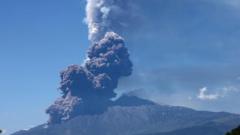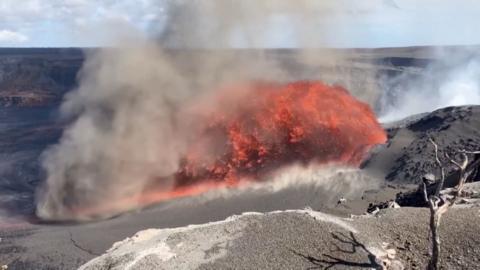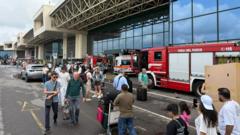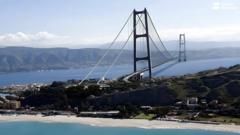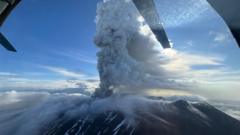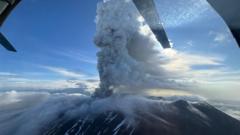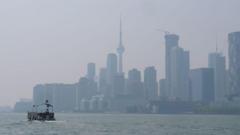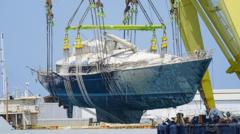In a dramatic display of nature’s power, Mount Etna, one of Europe’s most active volcanoes, erupted early Monday morning, unleashing large plumes of ash and smoke into the sky over Sicily. The National Institute of Geophysics and Volcanology (INGV) has confirmed a series of explosions with increasing intensity originated from the southeastern slope of the volcano, indicating changes in volcanic activity.
Early footage revealed the vivid spectacle of volcanic material cascading down the mountain, creating a spectacle of light and sound. Geologists have suggested that part of the volcano's crater may have collapsed, contributing to these flows, known as pyroclastic flows, which are a mixture of ash, gas, and rock traveling rapidly down the slopes. Although these flows can pose serious risks, current assessments indicate no imminent danger to local residents or infrastructure.
Initial reports indicated activity began at approximately 00:39 local time (22:39 GMT), with observations confirming a "Strombolian" eruption, characterized by intermittent explosions that result from gas moving within the magma chamber. Such eruptions, reminiscent of the fizz from a shaken soda bottle, can pose particular risks to aviation, prompting authorities to issue a red alert on Monday which was subsequently downgraded.
Despite Mount Etna's history of eruptions, including notable disruptions in previous years that affected flights to Catania Airport, this latest eruption seems to push ash and debris only as far as the Valley of the Lion, a point frequently traveled by tourists. In light of these developments, authorities are advising visitors to maintain a safe distance from active areas.
Early footage revealed the vivid spectacle of volcanic material cascading down the mountain, creating a spectacle of light and sound. Geologists have suggested that part of the volcano's crater may have collapsed, contributing to these flows, known as pyroclastic flows, which are a mixture of ash, gas, and rock traveling rapidly down the slopes. Although these flows can pose serious risks, current assessments indicate no imminent danger to local residents or infrastructure.
Initial reports indicated activity began at approximately 00:39 local time (22:39 GMT), with observations confirming a "Strombolian" eruption, characterized by intermittent explosions that result from gas moving within the magma chamber. Such eruptions, reminiscent of the fizz from a shaken soda bottle, can pose particular risks to aviation, prompting authorities to issue a red alert on Monday which was subsequently downgraded.
Despite Mount Etna's history of eruptions, including notable disruptions in previous years that affected flights to Catania Airport, this latest eruption seems to push ash and debris only as far as the Valley of the Lion, a point frequently traveled by tourists. In light of these developments, authorities are advising visitors to maintain a safe distance from active areas.

